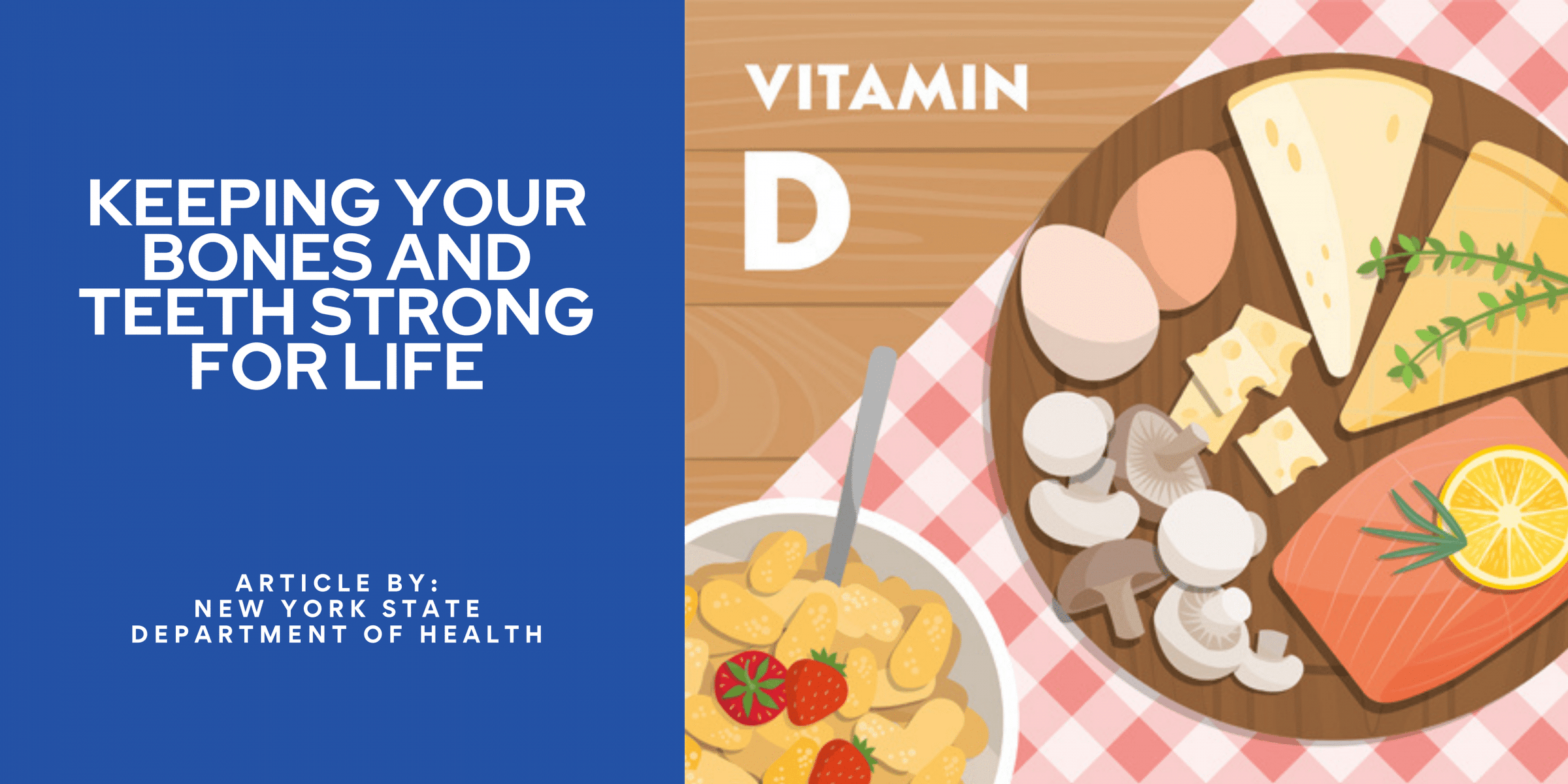
What is osteoporosis and why does it occur?
Osteoporosis is a silent disease that causes bones to become thin and weak, often resulting in fractures (broken bones) In the U.S., approximately 1 in 2 women and 1 in 4 men over age 50 will break a bone as a result of osteoporosis.What is the relationship between oral health and bone health?
- Bone loss and tooth loss are health concerns of older men and women. Tooth loss aects approximately 1 in 3 adults over age 65.
- If you have osteoporosis, you may be at risk for tooth loss. When the jawbone becomes less dense tooth loss can occur.
- Women with osteoporosis tend to have fewer teeth than women with normal bone density.
- Getting the right amount of calcium in your diet and taking the recommended amount of Vitamin D as a supplement are important for both your bones and oral health.

You can take the following steps to promote oral health and keep your bones strong for life.

- Eat a healthy diet including plenty of fruits and vegetables, whole grains, lean protein and low-fat dairy products.
- Maintain a healthy weight.
- Get 1000 to 1200 milligrams (mg) of calcium each day from calcium-rich foods and take a supplement only if needed.
- Get 600 to 800 IU of vitamin D; this usually requires a supplement.
- Be active every day.
- Don't smoke.
- Limit the amount of alcohol you drink.
- Take safety precautions to prevent falls and broken bones.
- Take care of your teeth and gums
- Brush your teeth and gums with a soft-bristle toothbrush at least twice a day. Use fluoride toothpaste.
- Use dental floss daily to clean between your teeth.
- Replace your toothbrush every 3-4 months.
- If you wear dentures, keep them clean and be sure they fit well.
- Visit your dentist regularly. Regular professional care is important for everyone!
- See your dentist if you have loose teeth, gum discomfort, loose-fitting dentures or pain in your teeth and mouth.
- If you need to take, or are currently taking, bisphosphonate medication for osteoporosis, be sure to tell your dentist Bisphosphonates have been linked to the development of osteonecrosis of the jaw (ONJ). It is a rare complication in a patient with osteoporosis, but it is more common in patients with cancer who receive large doses.
Read the full article by CLICKING HERE